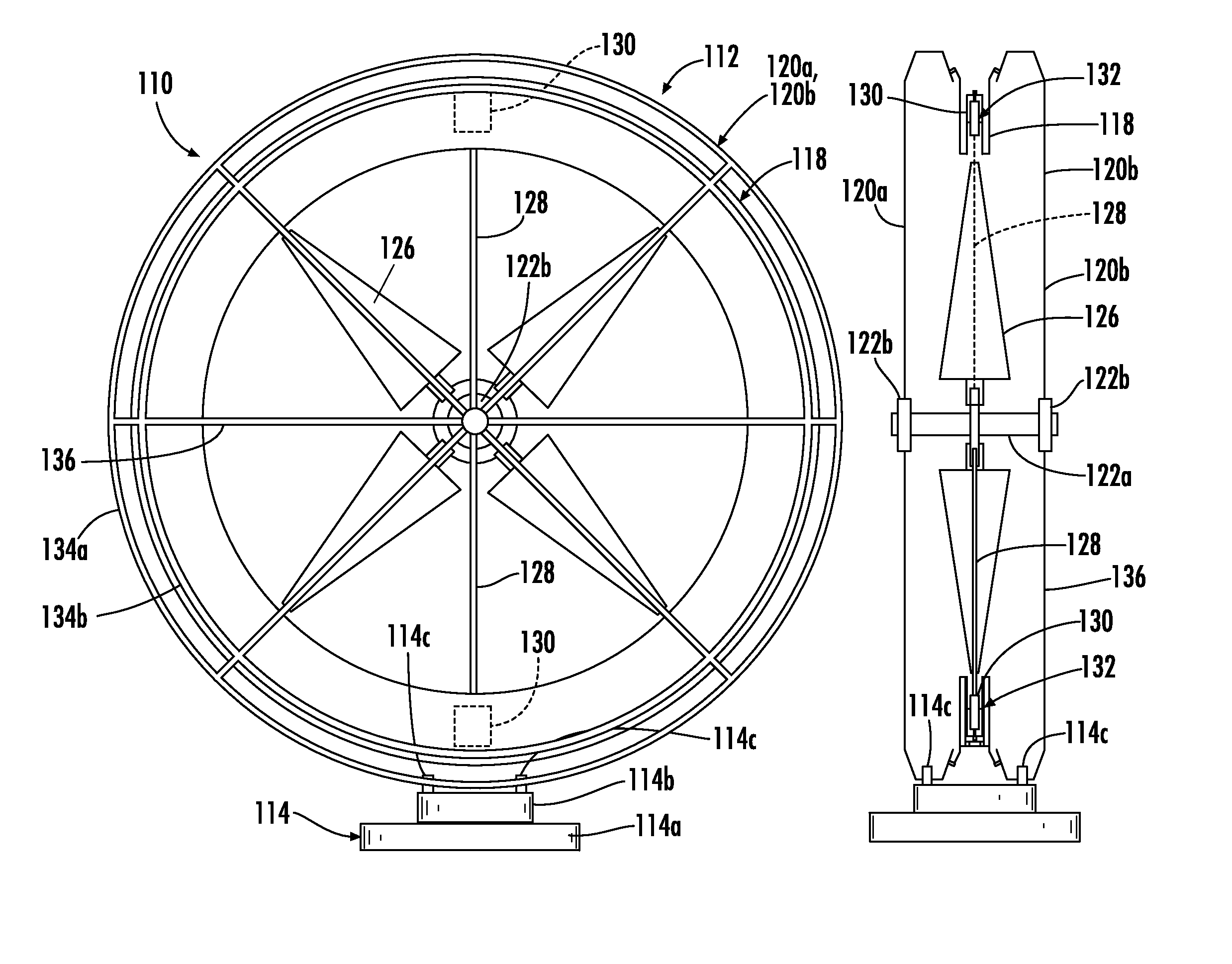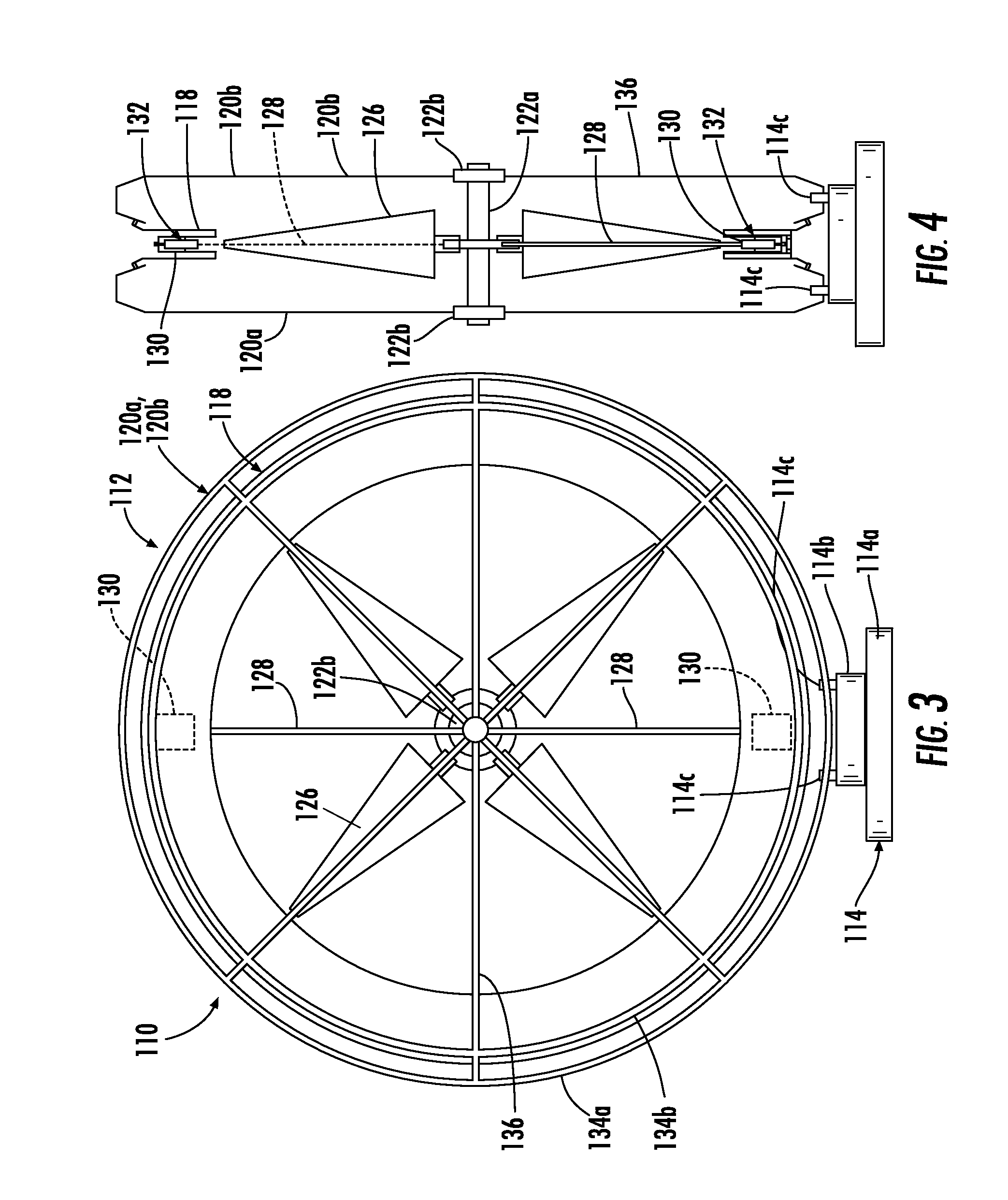Wind turbine
a wind turbine and wind power technology, applied in the direction of electric generator control, machines/engines, mechanical equipment, etc., can solve the problem that current wind turbines do not typically harness energy, and achieve the effect of simple and inexpensive components, enhanced wind turbine efficiency, and reduced nois
- Summary
- Abstract
- Description
- Claims
- Application Information
AI Technical Summary
Benefits of technology
Problems solved by technology
Method used
Image
Examples
first embodiment
[0077]Annular member 118 is mounted between frame members 120a and 120b, inwardly of outer annular frame member 134a. Similarly to the previous embodiment, magnets 130 are mounted to arms 128, which are mounted to shaft 122a, such that magnets 130 extend into the stator coil assembly 132. In addition, with this configuration, magnets 130 have an angular velocity greater than the angular velocity of the hub that mounts turbine blade to shaft 122a and equal or greater than the angular velocity of the turbine blades. As noted in reference to the first embodiment, the arms rotate with the shaft 122a and are therefore rotated when the turbine blades rotate.
[0078]Referring to FIG. 5, annular member 118 is mounted to frame members 120a and 120b by fasteners and forms a stator coil assembly housing 140 for stator coil assembly 132. Housing 140 comprises a generally annular channel-shaped member that may extend around the full circumference of the turbine wheel, as shown so that it fully enc...
second embodiment
[0103]Referring to FIG. 20, the numeral 310 designates another embodiment of the wind turbine of the present invention. Similar to the previous embodiments, wind turbine 310 includes a frame 312, a turbine blade assembly 322 supported by frame 312 on a post 319, which supports the frame on a base 314. Similar to the second embodiment, base 314 comprises a fixed base portion 314a but supports post 319 for rotational motion about fixed base portion 314a. As best seen in FIG. 20, post 319 is mounted in base 314 by bearings 314b and, further, may be driven by a motor 314c housed in base 314, which is controlled by a control system such as disclosed in the above reference copending application, entitled WIND TURBINE AND CONTROL SYSTEM, which is incorporated by reference herein in its entirety. Further, in the illustrated embodiment, fixed base portion 314a may include a base plate 314e and a plurality of support legs 314d which are pivotally mounted to base plate 314e to allow the height...
PUM
 Login to View More
Login to View More Abstract
Description
Claims
Application Information
 Login to View More
Login to View More - R&D
- Intellectual Property
- Life Sciences
- Materials
- Tech Scout
- Unparalleled Data Quality
- Higher Quality Content
- 60% Fewer Hallucinations
Browse by: Latest US Patents, China's latest patents, Technical Efficacy Thesaurus, Application Domain, Technology Topic, Popular Technical Reports.
© 2025 PatSnap. All rights reserved.Legal|Privacy policy|Modern Slavery Act Transparency Statement|Sitemap|About US| Contact US: help@patsnap.com



